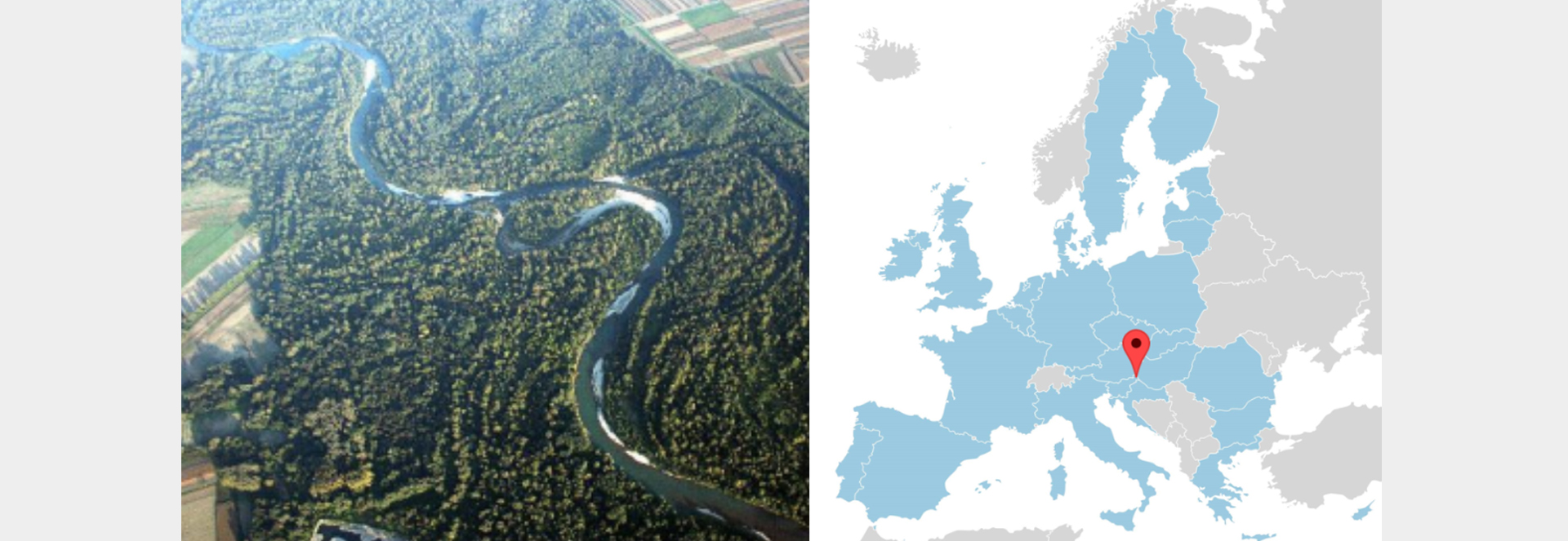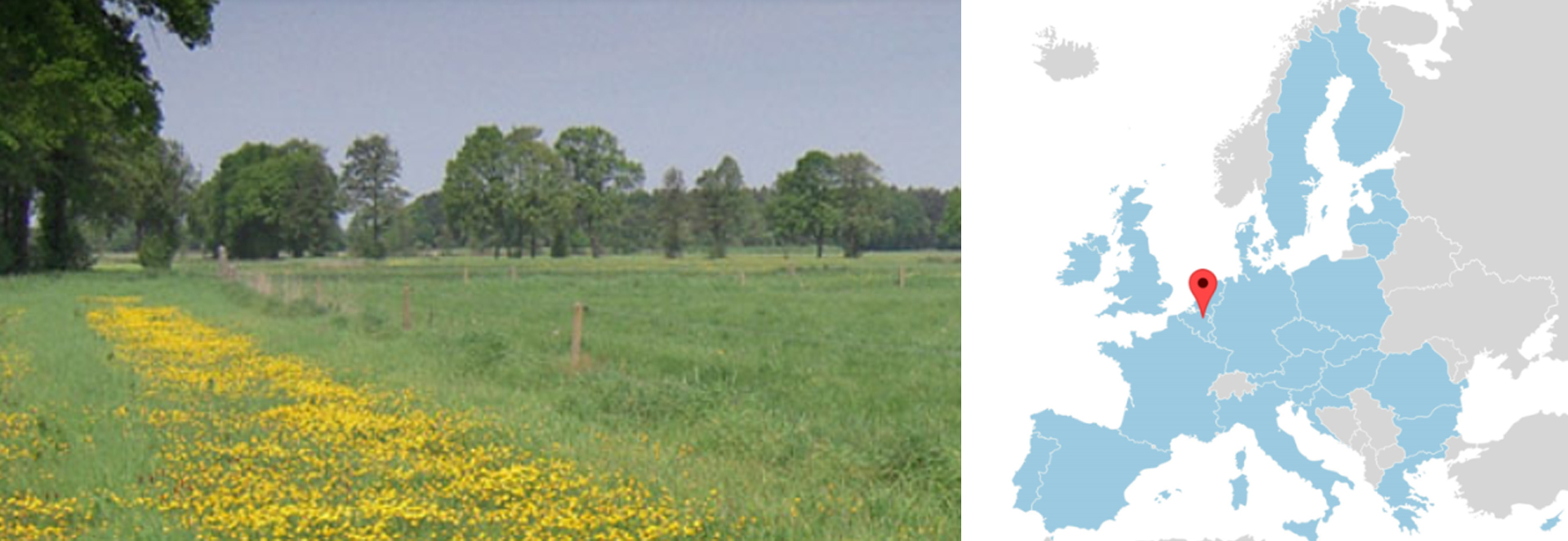

Historically, strips of land were important and abundant on fields. Yet, with agricultural intensification, field edges largely disappeared. Nevertheless, the advantages in terms of agronomy, landscape and environment are important. For environment in particular, field margins may act as a buffer, preventing leaching of pollutants in the water, while they also reduce soil erosion. Furthermore, a strip at the edge of a plot might enhance biodiversity and act as a refuge for wildlife 1.
Because of the sharp decrease in field margins since 1950, governments have decided to take action 2. Several measures are defined, each with their own goals and focus. The categories are divided up in strips for erosion, habitat, riparian strips and buffer strips.

Erosion strips are field margins that prevent erosion of the soil. These strips are strategically implemented and sown in with grass or mixture with grass.

Some strips are created to provide habitat for certain or several animals. These strips are also corridors on which wildlife can move from one refuge to another. Often, food for certain species is grown in these strips to lure them.

Riparian areas are the lands along watercourses and water bodies. They used to have unique soil and vegetation characteristics. They have several obvious advantages for the environment, but are largely cultivated now. Therefore, several schemes propose to reintroduce riparian strips.

All other margins along fields are put in one category. These are margins which are not cultivated and where a soil cover is planted. Mostly, these margins are created to buffer ground and surface water from agricultural pollution, although they also enhance biodiversity.
⬤ Agri-environmental schemes ⬤ Greening ⬤ Less favoured area payment
| Category | Expected from farmer | Environmental benefits | Price | Examples of regions | Barriers | Opportunities |
|---|---|---|---|---|---|---|
| Erosion ⬤ | Create grass strip to prevent erosion |
| 1047-1500 EUR/ha |
|
|
|
| Habitat ⬤ | Strips with specific features that create a habitat for certain species are created |
| 160-2530 EUR/ha |
|
|
|
| Riparian strips ⬤ | Establishment and management of riparian zones |
| 0,034 EUR/m2 (Wales |
|
|
|
| Field margin ⬤⬤ | Install a strip with grass/herbs at the border of a field |
| 565-1972 EUR/ha |
|
|
|

For a length of seven km along the river Drava, a strip of approximately 1 km wide riparian strips and a mosaic landscape have been in shape for ages. Because the wood in the riparian forest is of no value, it is left in place. Because the river floods often as well, pasture was maintained near the riparian forest for a long time, to prevent soil erosion. Yet, because of previous CAP measures, a lot of the pasture has been converted to arable land.
This area is of very high natural value because of the rich habitats and biodiversity the heterogeneous landscape provides. Yet, the landscape would not be sustained without farmers using the land. Therefore, the landscape value is inextricably related to the farmer population. On the other hand, the landscape could also foresee economic value for farmers.
Farmers in this region do benefit from several payments within the CAP. One of these is the agri-environmental payment. Also, there have been several efforts to convert the area into a landscape park. Although this could make the area more attractive and the countryside thus more vital, this was objected by farmers because of fear to lose property rights of the land.
Source: Rac, I., Denac, D., Erjavec, E., & Juvancic, L. (2016). Case study. Nature Conservation Enablin Social Security in Farming in Sredisce ob dravi (Slovenia). Ljubeljana, Slovenia.
| What: | Riparian Strips and mosaic landscape |
| Location: | Sredisce ob Dravi, Slovenia |
| Duration: | / |
| Area: | 430 ha |
| Measures taken: | Maintain riparian strips
Maintain traditional management of mosaic land near the river. |
| Results: | Maintenance of the riparian strips and mosaic landscape |

In the fields near the streams Dommel and Warmbeek in the North-East of Flanders, field margins were installed to provide several environmental benefits. The field margins in the region were coordinated by water boards that helped farmers to adapt to the new practices. The local water board in the region was very important in ensuring that all farmers near the region participated to obtain higher environmental benefits. They invited farmers to participate through farm visits. Furthermore, a remuneration of 1581 euro per hectare was given to remunerate farmers for the extra cost of work and maintenance the field margins create.
As this project, implemented from 2007 onwards was one of the pioneering projects in Flanders with cooperation between different actors and involvement of a whole region. The results were overall positive as well, both for farmers as for society.
Source: de Krom, M. P. M. M. (2017). Farmer participation in agri-environmental schemes: Regionalisation and the role of bridging social capital. Land Use Policy, 60, 352–361.
https://doi.org/10.1016/J.LANDUSEPOL.2016.10.026
| What: | Field margins |
| Location: | North-East of Flanders |
| Duration: | 5 years |
| Area: | 1830 ha |
| Measures taken: | Field margins bordering streams were installed
Field margins are pesticide and fertilizer free |
| Results: | Enhance regional biodiversity
Provide ecological corridors for wildlife Prevent leaching of fertilizers and pesticides |